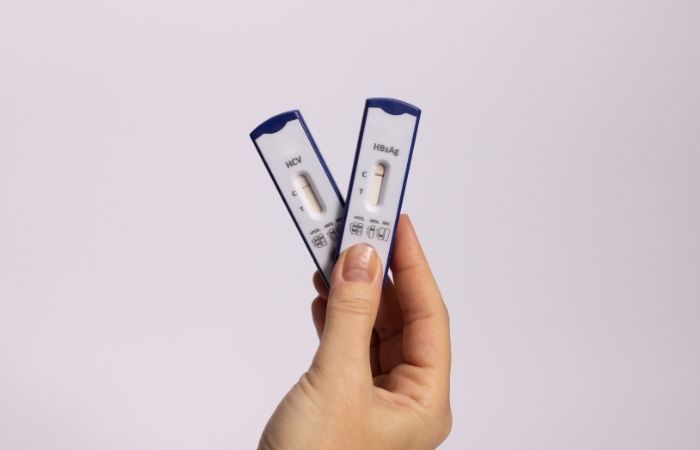Hormonal Contraceptives: Good for Pregnancy, Not for STDs
Here’s a wake-up call many don't see coming: hormonal birth control, like pills, rings, and implants, doesn't guard against STDs. Sure, they're fantastic at stopping pregnancy, but these popular methods have no superpower against infections like Chlamydia, Gonorrhea, or HIV.
According to the CDC, while hormonal contraceptives are effective at preventing pregnancy by suppressing ovulation or thickening cervical mucus, they offer zero protection against sexually transmitted infections. This critical gap leaves millions vulnerable, mistakenly believing they're shielded from all sexual risks.
Real Talk: How Hormonal Methods Actually Work
Hormonal contraceptives function by altering your hormonal environment, usually estrogen and progesterone, to prevent pregnancy. They effectively disrupt ovulation, prevent egg fertilization, or keep a fertilized egg from implanting. But there's a big catch: these methods do nothing to stop the transmission of pathogens that cause STDs.
A comprehensive 2022 study published in the American Journal of Obstetrics and Gynecology (AJOG) highlighted that hormonal contraception might even slightly elevate the risk of contracting certain STDs like HIV due to hormonal changes impacting vaginal tissue susceptibility. This isn’t to scare you, but it's crucial to know what you're really up against.

People are also looking for: Can I get an STD if the condom didn’t break?
Condoms: Still the Unsung Heroes of STD Prevention
If you're sexually active, condoms are your real best friend in the bedroom, aside from consent and communication, of course. External (male) and internal (female) condoms are the only contraceptive methods clinically proven to significantly reduce the transmission of STDs.
The Mayo Clinic notes that condoms act as physical barriers, stopping fluids and skin-to-skin contact that typically spread infections. While no method outside of abstinence is 100% effective, consistent and correct condom usage dramatically reduces the risk of diseases like herpes, HPV, and HIV.
The Condom Effectiveness You Need to Know
Still skeptical? Let's bust a myth: condoms aren't just good, they’re scientifically proven. Studies consistently show that regular condom users are significantly less likely to contract STDs compared to those relying solely on hormonal contraception.
A study cited in The Lancet Global Health emphasized condoms reduce HIV transmission risk by approximately 80-90% when used correctly, highlighting their essential role in safer sex practices.
Birth Control Myths That Leave You Vulnerable
Let’s talk about the misinformation mill, because it’s working overtime. One of the most dangerous myths out there is the belief that being on birth control means you're safe from everything, including STDs. It’s a comforting thought, but a dangerously false one.
This misconception shows up everywhere, from whispered hallway advice to pop culture. And it’s especially common among younger people. According to a 2022 study in JOGNN, nearly 40% of sexually active teens wrongly believe that birth control pills protect against STIs.
Where Do These Myths Come From?
Some of it stems from how we talk about “safe sex,” a term that’s often used to mean both pregnancy and STD prevention. But when your health class skips over the difference between contraceptives and barrier methods, you're left thinking they're one and the same.
Add to that the visual language of media: a couple in a movie uses a pill packet as shorthand for “we’re protected.” But protected from what? Hollywood rarely answers that part.
Misplaced Trust in IUDs and Implants
Another myth? That long-acting reversible contraceptives (LARCs) like IUDs offer some kind of immune shield. While LARCs are top-tier for pregnancy prevention, lasting years without user error, they do absolutely nothing for STD defense. That’s not a flaw in the method; it’s just not their job.
Relying on your IUD alone while skipping condoms is like wearing sunscreen indoors and expecting it to block a sunburn during a beach day. Different tools for different risks.
Check Your STD Status in Minutes
Test at Home with Remedium10-in-1 STD Test Kit

 For Women
For Women Results in Minutes
Results in Minutes No Lab Needed
No Lab Needed Private & Discreet
Private & DiscreetOrder Now $189.00 $490.00
For all 10 tests
Why Mixing Methods Is the Real Power Move
Here’s the truth bomb: the smartest strategy for full sexual health protection is method mixing. That means using hormonal birth control for pregnancy prevention, plus condoms for STD protection. It’s called “dual protection,” and it’s backed by organizations like the CDC and WHO.
Dual Protection Isn’t Overkill, It’s Standard
Just like you lock your doors and set an alarm, protecting your sexual health from all angles isn’t overreacting, it’s adulting. Think of birth control as your baseline. Condoms? That’s your firewall. Together, they dramatically reduce the risk of both unintended pregnancy and STD transmission.
A 2021 analysis in the American Journal of Obstetrics and Gynecology found that people who used condoms in addition to other contraceptives had lower rates of both chlamydia and gonorrhea than those relying on one method alone. It’s not just logical, it’s measurable.
Emotional Truths: Why We Don’t Always Protect Ourselves
Let’s get real: it’s not just ignorance that leaves people unprotected, it’s fear, shame, and sometimes, love. You trust your partner. You don’t want to “ruin the mood.” You worry they’ll think you don’t trust them. These are real emotional barriers, and they’re powerful.
Maya, 26, shared:
“I thought if I asked him to use condoms even though I was on the pill, he’d think I didn’t trust him. I ended up with chlamydia, and a lot of regret.”
This isn’t about blaming anyone. It’s about normalizing smarter conversations. Talking about STD protection doesn’t mean you're accusing your partner. It means you care enough about your body, and theirs, to keep both of you safe.
The Cost of Silence
STD rates are rising in the U.S., particularly among young adults. The CDC reports that chlamydia and gonorrhea rates remain at record highs. Many of these cases occur in people who believed they were safe because they were on birth control.
Silence doesn’t protect anyone. Transparency does. And testing? That’s self-love in action.
Testing Is the Missing Piece
Even with condoms and conversation, the safest move is to test regularly. STDs don’t always show symptoms, and you can carry, and pass, an infection without knowing it. That’s why at-home STD test kits are such game changers. No judgment. No awkward waiting room. Just clarity.
STD Rapid Test Kits offers confidential, accurate, and fast tests for the most common STDs. If you're using birth control, testing regularly ensures you're covering all bases.

People are also looking for: Should I tell my partner I’m getting tested?
FAQs
1. Can birth control pills protect me from HIV?
No. Birth control pills only prevent pregnancy. HIV is transmitted through blood, semen, vaginal fluids, and other routes that birth control pills do not block.
2. Is an IUD enough protection against STDs?
No. An IUD prevents pregnancy, not infection. You’ll still need barrier methods like condoms to reduce STD risk.
3. Do condoms protect against all STDs?
Mostly. Condoms significantly reduce risk for most STDs, but infections spread through skin contact (like herpes or HPV) may still transmit.
4. What’s the safest way to have sex?
Use condoms consistently, communicate openly with your partner, and get tested regularly. Combine methods for best protection.
5. Can I get an STD if I’m in a monogamous relationship?
Yes. If either partner had an untreated infection before the relationship, transmission is possible, even in monogamy.
6. How often should I get tested for STDs?
At least once a year if you’re sexually active. More often if you have multiple partners, new partners, or don’t consistently use protection.
7. Does using both birth control and condoms make sex safer?
Yes. This is called dual protection and it’s the gold standard, preventing both pregnancy and STDs.
8. Are dental dams effective for oral sex protection?
Yes. Dental dams reduce the risk of STD transmission during oral sex, especially for infections like herpes and gonorrhea.
9. What if I have symptoms but test negative?
Some infections take time to show up. If symptoms persist, retest or consult a healthcare provider for a follow-up.
10. Can I use two condoms for extra safety?
No. Using two condoms at once can cause friction and increase the chance of breakage. One condom used correctly is safest.
Protecting More Than Just Pregnancy
It’s easy to trust the pill, the patch, or the IUD. They’re powerful tools, and they work. But when it comes to STDs, they’re only part of the picture. Relying solely on birth control for sexual safety is like locking your front door and leaving the windows wide open. You deserve better protection than that.
Combining your contraceptive method with consistent condom use and regular STD testing gives you full-spectrum defense. It’s not overkill, it’s what smart, informed sexual health looks like. And it’s not about fear. It’s about power. Power to know your status. Power to protect your body. Power to have the kind of sex life that’s not just exciting, but sustainable and safe.
Sources
1. CDC – STD Prevention and Birth Control
2. Mayo Clinic – STD Symptoms and Causes
3. The Lancet Global Health – Contraception and STD Risk
4. American Journal of Obstetrics and Gynecology – Dual Protection Efficacy










